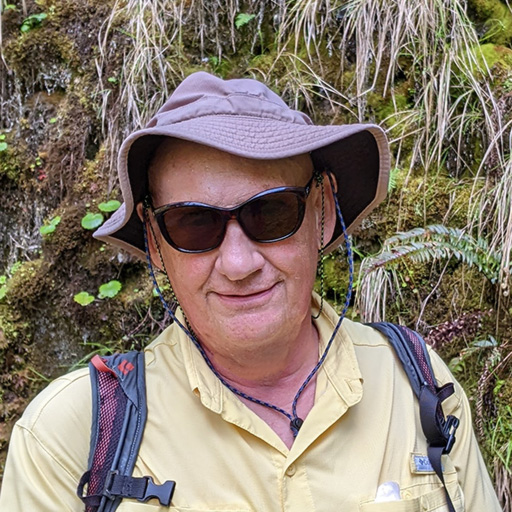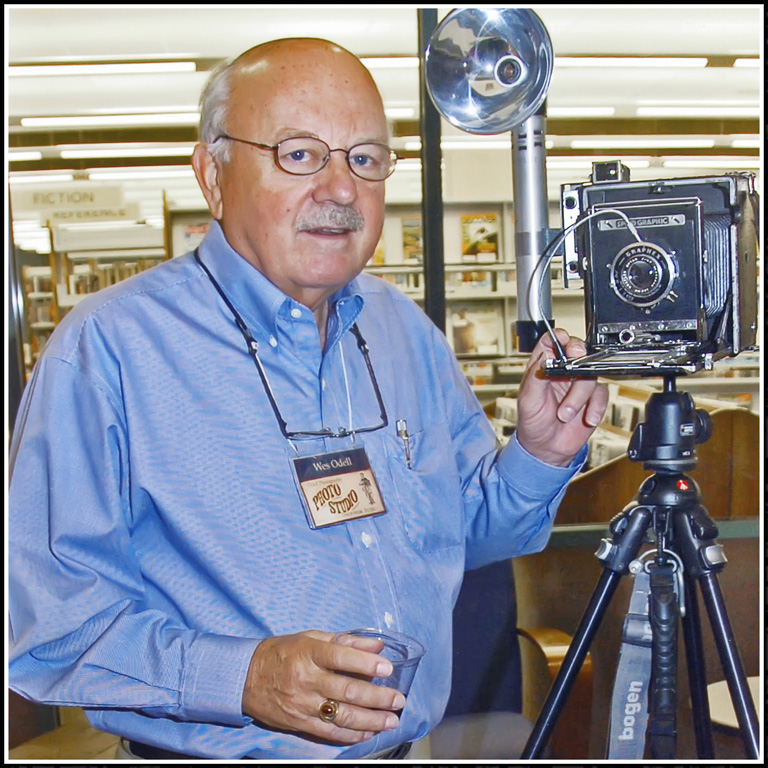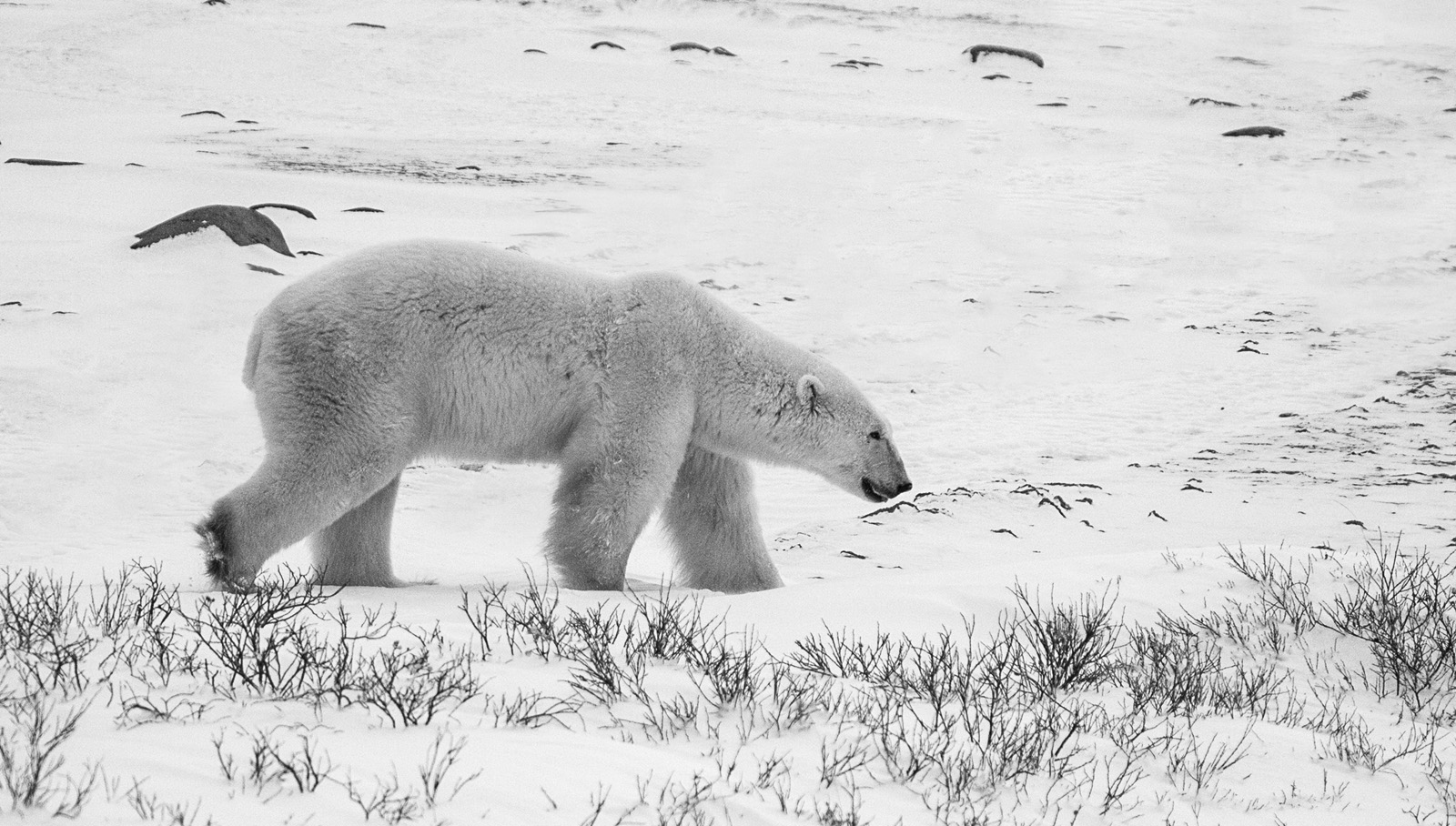About the Image(s)
This was chosen as one of a panel of entries to a local Interclub competition. The overall theme is Predators and I was wondering whether this was good enough as a stand alone image. I have several hundred pictures of polar bears from our trip to Churchill, some better than others. The weather varied from brilliant sunshine one day to a howling blizzard another. This was taken on one of the overcast days which means there are no real shadows and the bears don’t always show up well. This bear was close to our tundra buggy and spent a long time walking round us, obviously able to smell a potential food source ??“ ie us! They are fantastic predators and these were all hungry because they were waiting for the ice to form over Hudson Bay so they could move out and hunt.
I was using a Canon camera at the time and thought it was good, but since moving on to the Olympus system, I realise how much better the Olympus lenses are, especially at high ISO.
ISO 800
100mm lens
F5.0
1/1000

Ed Ogle
I had an Olympus film camera once upon a time...
The perfect shot for black and white: a polar bear in the snow. Since this wouldn't be a PSA nature shot because of the tire tracks in the background, I would consider taking them out in Photoshop.
Here's a quick edit of what I'm thinking about. I also edited the clarity, contrast and white level a bit as well.
Being New I hope it's OK to edit other's photos in this group. My other group does it all the time. If this isn't OK just let me know.
Posted: 03/06/2025 13:48:10

Somdutt Prasad
Hi Ed, the latest version of the PSA/FIAP Nature rules do allow for some man made things - the wording in the definition is
"When they are a small but unavoidable part of the scene, such as an unobtrusive footprint or track in the background."
If I were judging I would allow it in nature, but you are correct - some judges may not. Problems with trying to define these things is that there is always room for interpretation. Posted: 03/07/2025 10:22:37

Diana Magor
Yes we do alter each other's so no problems there at all. You went for a darker bear than me. I couldn't decide what was the best. Posted: 03/11/2025 06:27:08

Somdutt Prasad
Diana, nice polar bear shot, I love bears!
Two suggestions:
1. If you are using it as a mono (not a reality division like Nature) image, I would remove the black blob (I presume it is a rock) above the bears tail.
2. If you shot raw, you might try a high key edit, polar bears on snow make some very nice high key images.
I was also interested in your comments about the OM system. I appreciate that they are small and light (compared to even crop sensor mirrorless cameras like the Fuji X series), and so I am intermittently attracted towards it as it avoid having to carry haevy systems. But I always thought that the smaller sensor would be noisy at high ISO, and as a lot of wildlife opportunities are in early morning or fading late afternoon light, this would not be good for wildlife. You seem to be happy with the OM for wildlife, how high a ISO, can you go to on the OM, without getting noise which is not manageable in post processing?
Enjoy your skiing, and let us have your thoughts when you are back home from Norway.
Regards
Som Posted: 03/07/2025 10:35:33

Tom McCreary
I have been using OM system cameras for a few years. I really like the smaller and much lighter weight, especially telephoto and you get 2 times as close. A 400mm lens on an OM system is the same as a 800mm lens on a 35mm full frame. I had a Nikon D7500 (crop sensor) with a 100-400 Tamron lens (150-600mm full frame equivalent), and my Olympus M1 Mark III camera with the Olympus 75-300mm has the same reach at about 1/3 the weight. I have attached an image I entered in January 2023 to this group. It was shot at ISO 1250, with a 17mm lens and there is really no noise. I don't go really high ISO so I could not say how a really high ISO would be.
Posted: 03/10/2025 12:56:07

Diana Magor
I thought about high key but having recently done one of those, thought I'd try a straight one instead. Yes I like the high key as well. Posted: 03/11/2025 06:25:37

Wes Odell
I love white subjects, especially those on white such as yours. Why? because they are so difficult and they emulate my style which is b&w. Environmental nature shots are so much more interesting that caged (or zoo). Re the weather: I don't think the shot would be as nice if it were one of those brilliant sunny days you mentioned. Posted: 03/10/2025 09:28:16

Stephen Levitas
After all this discussion, I think I like having the texture of the tire tracks, but agree that the black rock behind the tail of the bear might be better gone. Posted: 03/10/2025 22:44:40

Diana Magor
Thanks for all the comments. I agree that the rock could go if not using for Nature and the tracks. Yes, some judges wouldn't even notice them but others are eagle eyed and would throw it out. The rules are open to interpretation anyway.
My Olympus is brilliant and when we upgraded to the latest one we found the ISO was even better. I'm always wary of using high ISO because of my experiences with Canon where it was awful. Nikon have always been much better. I believe Sony have the best record but I like Olympus. I started with OM1 film cameras when I really took off with photography. I have used 1000 and nowadays there are so many software options for removing noise that it isn't a problem. I keep meaning to try higher values. The new lens is also a brilliant option with very good stabilisation. Posted: 03/11/2025 06:24:28

Tom McCreary
I really like the image, and the composition with plenty of room for the bear to move into. The separation from the background is good. I agree with removing the tracks and rock. Posted: 03/11/2025 11:52:07

Diana Magor
Sometimes the polar bear pictures do very well in Internationals and sometimes they don't. Any suggestions why this difference? Posted: 03/26/2025 19:32:31

Tom McCreary
How long have you been doing this??? It is different judges. I know a club member that has an image that received a medal in one salon and did not get it accepted in the next. Posted: 03/28/2025 20:25:53

Diana Magor
I know- that happened to me this month. I got a gold medal for a portrait and in the next comp the exact same image - no changes to it at all - got a score of 9 out of 15, which means they thought it was ordinary. I shouldn't be surprised, but the polar bears do seem to vary enormously. Something I think looks ordinary ends up scoring highly and yet one of mine with action or good lighting bombs out. I know it depends on what else is in the competition and who the judges are, but a good one ought to get a reasonably high mark. Posted: 03/29/2025 10:56:56

Jennifer Doerrie
I like the brighter polar bear as you've presented it, particularly in this image where you already have the rocks, tracks and brush to add contrast. As for the differences with polar bear images in the Internationals, I found judges often went more for images where there was some action or interaction occurring, or if the image was a portrait of the animal, it needed to be close in and very sharp. Images like this one, no matter how well done, seemed to get marked down for not showing enough action. Of course, as you and Tom already mentioned, there certainly is a subjective element to it, too. Also, having exhibitions with separate "polar" categories or awards likely makes a difference. Posted: 03/31/2025 05:04:08


